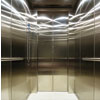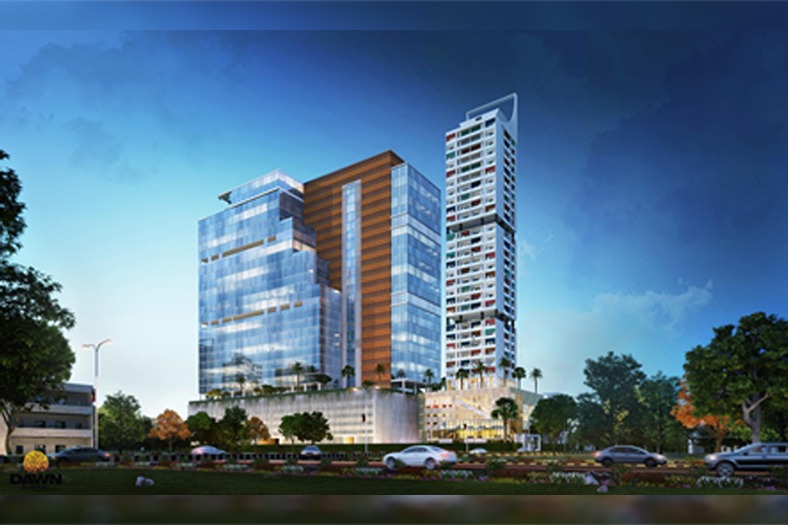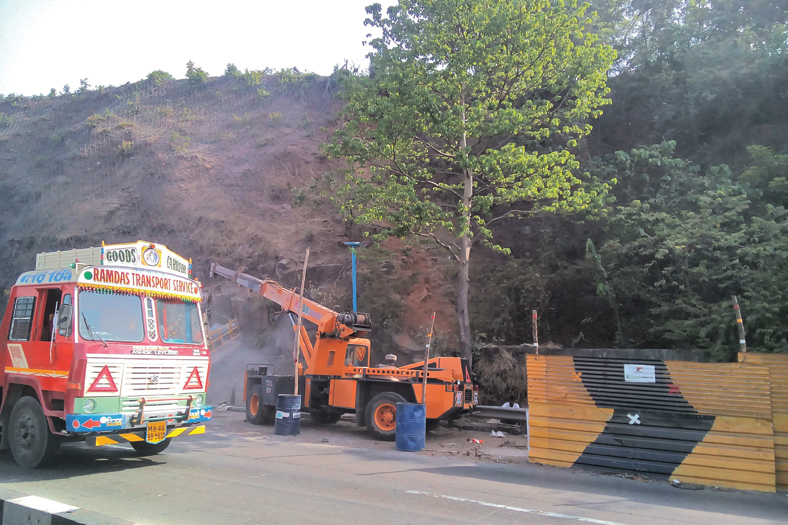Elevator Efficiency: How elevators can play crucial role in reducing the energy consumption of a building with energy efficient technologies

Impact on the energy consumption
Buildings represent a very high energy consumption percentage compared to other economic sectors. Although percentages vary from country to country, buildings are responsible for about 30 to 45 per cent of the global energy demand. Commercial buildings, and primarily office and university buildings, are classified amongst the buildings presenting the highest energy consumption. The commercial building sector has therefore become the focus of many governmental energy reduction initiatives to achieve more sustainable development. However, advances in technology are increasing to achieve the desired reduction in energy consumption goals but this does not necessarily lead to an overall reduction. Long term energy savings can be achieved by improving the building design as well as conserving energy during the operation phase. In order to determine the sources of errors and improve these predictions, the sensitivity of building energy models to different input parameters needs to be evaluated.
Speaking on the elevators impact on the energy consumption of the building, Dr Anil Jindal, Chairman, SRS Group says, “Energy use by elevator is strongly dependent on factors like the type of elevator used, number of passenger in an elevator, hydraulic machine room less geared, it also depends upon standby losses, other reasons like programming. On the other hand capacity of elevator in HP engine size is also one of the reason. The elevators impact on the energy consumption of the building also depends on the speed factors like elevators with high speed versus normal speed. Similarly it also depends upon the freight or passenger type and number of times it is used.”
In 2014, more than 50 per cent of the world’s population (approximately 3.9 billion people) lived in cities and there were 28 global mega-cities with more than 10 mn people. By the end of this century, the first metropolitan century in the history of the earth when the global population is expected to reach between 10 and 11 bn people, around 80 per cent of the world will inhabit urban spaces.
Keeping these figures in mind, and factoring in the challenges that urbanisation represents for natural resources, space, and energy–40 per cent of the global energy is consumed in buildings, it is more imperative than ever that the choices made today about developing cities are sustainable ones, and leave a lasting positive impact on the generations to come. At this pivotal juncture, it should be the aim to make cities the best places to live. On this note, Rajnish Ramu, Vice President, Marketing, ThyssenKrupp Elevator (India) Pvt Ltd suggests that, the energy consumption can be reduced by using energy efficient technologies. He suggests, “With buildings responsible for 40 per cent of the world’s energy consumption, new elevator technologies are capable of energy savings by up to 27 per cent while increasing usable floor space by up to 30 per cent. In some cases elevators are a key element contributing to energy self-sufficiency in buildings.”
According to a study by the American Council for an Energy-Efficient Economy, elevators and escalators consume 2 to 5 per cent of the energy used in most buildings, but can reach as high as 50 per cent during peak operational times. “The technology exists today to reduce that consumption by 40 per cent or more according to the study,” says Sebi Joseph, Managing Director, Otis Elevator company India.
Saving the energy
Elevator manufacturers are producing premium elevators for mid- and high-rise buildings that are extremely energy efficient. These traction elevators have improved controls, hardware, and other systems that not only use less energy, but are much more compact, efficient, and even generate electricity that a facility can use. Sharing his views on how energy efficient elevators can save energy of the building, Dr Jindal suggests methods of reducing overall energy usage with control strategies. He says, “The most energy efficient elevators now have software and microprocessor based controls instead of electromechanical relays. In-cab sensors and software automatically enter an idle or sleep mode, turning off lights, ventilation and video screen when unoccupied. Destination dispatch control software batches elevator stop requests, making fewer stops and minimising wait time, and reducing the number of elevator required. Personalised elevator calls used with destination dispatch controls to eliminate the need for in-cab controls.”
In recent years, ThyssenKrupp Elevator introduced a range of new permanent-magnet synchronous (PMS) gearless machines, which consume up to 50 per cent less energy than conventional geared machines. PMS machines are also lighter, more compact and require no gearbox, which not only saves on material and gear oil, but also substantially reduces the chances for oil pollution.
Informing on ThyssenKrupp’s elevators performance Ramu says, “High-rise and high-speed ThyssenKrupp Elevator elevators can be equipped with regenerative drives, which feed energy produced during the generative mode of elevator operation (when the car is lightly loaded and moving up, or heavily loaded and moving down) back into the building’s power grid, which results in up to 50 per cent energy savings.” ThyssenKrupp’s other energy-saving measures include the extensive use of LEDs in elevator cabs and escalators, which can offer up to 80 per cent energy savings, while providing the same luminance as traditional lights and a lifetime 10 times longer. LED lights also emit low heat and minimal radiation.
Joseph explains on how elevators offered by Otis are better than conventional systems. He says, “Otis’ flagship Gen2 elevator and its ReGen drive help save energy in the building. ReGen drives when combined with a Gen2 elevator can reduce energy consumption by up to 75 per cent compared to conventional systems with non-regenerative drives. These drives from Otis capture energy generated by the elevator, and feed it back into the building’s grid where it can be used by other loads connected to the same network.”
Increasing energy efficiency and reduce operation cost
Already existing buildings and its maintenance has become an important part. Already existing buildings still make use elevators which are not energy efficient. But today as part of building automation having energy efficient elevators is crucial. Therefore new technology in the elevators will help building to save energy and equally help in reducing the operation cost in already existing elevators.
Existing elevators can be made energy efficient by adding Variable Frequency Drives (VF drive) in the door system and elevator control system. This helps optimise power consumption by regulating power. “ReGen drives can additionally be fitted to an existing system so that energy generated by the elevator can be fed back into the building’s grid where it can be used by other loads connected to the same network. Auto-fan and auto-light switch off operations can also be adopted and LED lights can be used to replace tube lights inside the elevator car,” says Joseph.
Another way to optimise energy in buildings with multiple elevators is grouping passengers going to the same or nearby floors into the same elevator. This allows the elevator with the least load and closest to attend to the passenger call. This setting saves energy as it sends only one elevator to respond to a passenger call.
Dr Jindal also agrees, “Regenerator drives are another remarkable advancement in energy efficient elevator technology. They recycle energy rather than wasting heat. The most energy efficient types of elevators are machine room-less and use of biodegradable oils in hydraulic system.”
Replacing an entire elevator system is a capital expenditure many organisations simply cannot afford at the moment. But retrofits that significantly save energy costs and improve indoor air quality can be a boon to the balance sheet. From motor and drive retrofits to replacement of incandescent lighting with LEDs, there is a spectrum of cost-saving modernisations available for aging elevator systems. If a simple cab refurbishment is needed, environmentally responsible choices for panelling, carpeting and paint increasingly are available.
Customer expectations are ever increasing and it is important to meet them always. This forms an important corners stone of customer approach and strategy. ThyssenKrupp invests heavily in R&D and by virtue of it, they have successfully launched energy efficient elevators and escalators which complements the green rating of a building. On this note, Ramu briefs, “ We use the latest technology in our product to make them more environment friendly. While, the latest products come with the green technology, we also have our attention on all existing installed elevators which can be made more energy efficient by upgrading them partially or completely with the latest technology parts, components.”
ThyssenKrupp accord high focus to this section of the market thus converting the already existing elevators into more energy efficient green elevators. This manifests into reduced operating cost for the existing buildings.
Some avenues Ramu mentions for increasing the energy efficiency are:
• Reduced operational drives with high efficiency rate and low power consumption (example regenerative and gearless drives).
• Energy costs LED lighting with long lifetime and bright colours. Energy-efficient controller (measuring load and energy recovery).
• Energy-saving operational modes (example speed reduction, sleep mode, “stop and go”).
• Standby functions (example learning function for optimal use). It must have switch-off functions and optimised motor dimensions tailored for the application.
Advanced technology
Elevators play an important role in building automation of a project. Elevators have a host of features that play a part in the overall automation of the building project. Elevators can be assigned to the IBMS of the building by which the elevators can be controlled and used in a more efficient and user-friendly way.
“In terms of control and automation through the latest technologies in the elevators, we have our latest products using DSC and TWIN which can have two cars running independently in the same shaft,” says Ramu.
In terms of elevator control technology, the most important recent advancement is Destination Selection Control (DSC), for which passengers enter their destination floor on input terminals in the lift lobby. Passengers going from one floor to the same destination floor are then assigned to the same elevator to take them to their destination in the shortest time. Compared to a conventional group-control system, ThyssenKrupp’s DSC system significantly reduces the number of intermediate stops per trip and optimises traffic so that handling capacity is substantially increased and the elevators are utilised much more efficiently. By eliminating unnecessary elevator trips and stops, the DSC group-control function also reduces the energy consumption of the elevator group, thus lowering its overall carbon footprint.
TWIN is ThyssenKrupp Elevator’s patented solution allowing two cabs to travel independently of each other in a single shaft. Arranged one above the other, the cabs can travel at different speeds and in opposite directions, as required. An intelligent DSC system ensures passengers reach their destination in the shortest possible time. All passengers have to do is enter their destination floor on a touch screen outside the elevator. In a fraction of a second the computerised control system selects the elevator cab that will take them there in the shortest time and, via the terminal, informs them which door to approach. When passenger volumes are low during off-peak periods, one of the cabs can be parked on the lowest or highest floor, while the other remains in operation. This can save electricity and further lower energy consumption.
Joseph shares, “The Compass Destination Management System uses Otis’ patented technology to constantly evaluate real-time passenger traffic to improve flow and travel time in busy mid- and high-rise buildings. Instead of using standard hall call buttons, passengers register their specific floor in the lobby before they enter the elevator. The system assigns passengers travelling to nearby floors to the same car. This minimises the number of stops per trip and significantly reduces car crowding as well as passenger wait and travel times. The technology has also been adapted to integrate with security systems. The optional compass seamless entry is specifically designed to integrate building security and elevator-dispatching systems through various access devices.”
Conclusion
Building automation in India is witnessing a robust growth in the coming years owing to smart cities and demand for the urbanisation. With this demand there will be lot of scope and demand for the energy efficient elevators, which will play a significant role in saving energy of the building. Hopefully, in the near future India will be able develop energy efficient technologies.
——-
Regenerator drives are another remarkable advancement in energy efficient elevator technology.Dr Anil Jindal, Chairman, SRS Group
——–
Otis’ flagship Gen2 elevator and its ReGen drive help save energy in the building.Sebi Joseph, Managing Director, Otis Elevator Company India
——–
We have our latest products using DSC and TWIN which can have two cars running independently in the same shaft.Rajnish Ramu, Vice President – Marketing, ThyssenKrupp Elevator (India) Pvt Ltd
83
Cookie Consent
We use cookies to personalize your experience. By continuing to visit this website you agree to our Terms & Conditions, Privacy Policy and Cookie Policy.









